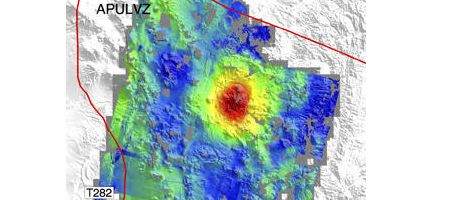Scientists examining 20 years of satellite data have found a sombrero-shaped bubble of magma 62 miles across – and, appropriately, located in South America.

The Altiplano-Puna plateau in the central Andes region is home to the largest active magma body in Earth’s continental crust, and is known for a long history of massive volcanic eruptions.
Now, a study led by Yuri Fialko of Scripps Institution of Oceanography and Jill Pearse of the Alberta Geological Survey has revealed that magma is forming a big swelling in the middle of the crust, pushing up Earth’s surface across an area 62 miles wide, while the surrounding area sinks.
This has created a unique geological phenomenon that the researchers have dubbed the ‘sombrero uplift’.
“It’s a subtle motion, pushing up little by little every day, but it’s this persistence that makes this uplift unusual,” says Fialko. “Most other magmatic systems that we know about show episodes of inflation and deflation.”
The uplift is caused by a large blob of magma, called a diapir – the first active magma diapir to be discovered rising through the crust.
Fialko said a similar uplift phenomenon is occurring near Socorro, New Mexico, but at a much lower rate.
While the sombrero’s not believed to be any threat – it’s rising far too slowly – it could provide insights into the initial stages of massive magmatic events leading to the formation of large calderas.
Such super-volcano events erupt thousands of cubic kilometers of magma into the atmosphere and can affect local and global climates.
“Those were truly disaster-type events,” says Fialko. “Fortunately such events haven’t happened in human history, but we know they did happen in the Altiplano-Puna area in the past.”






